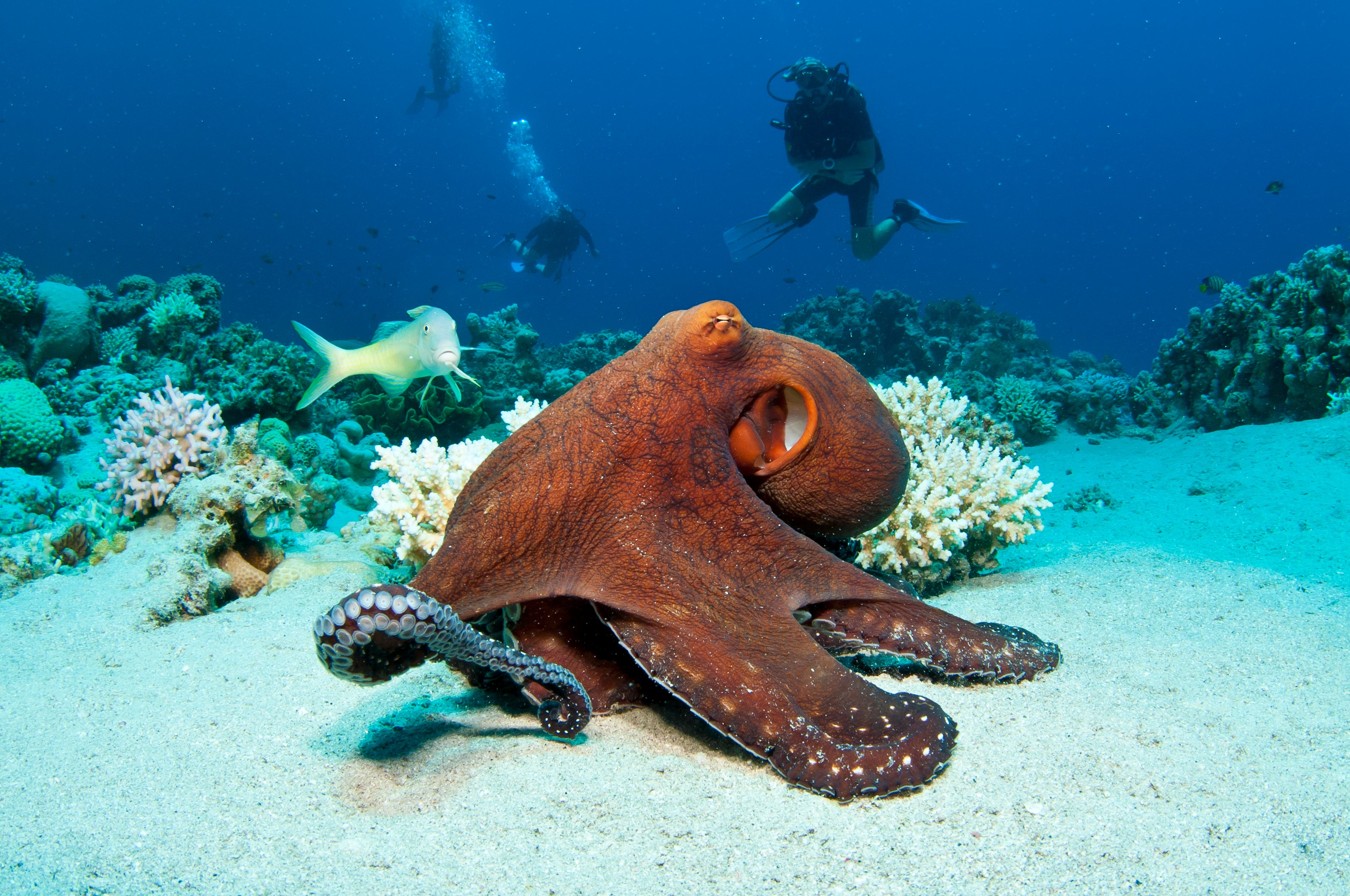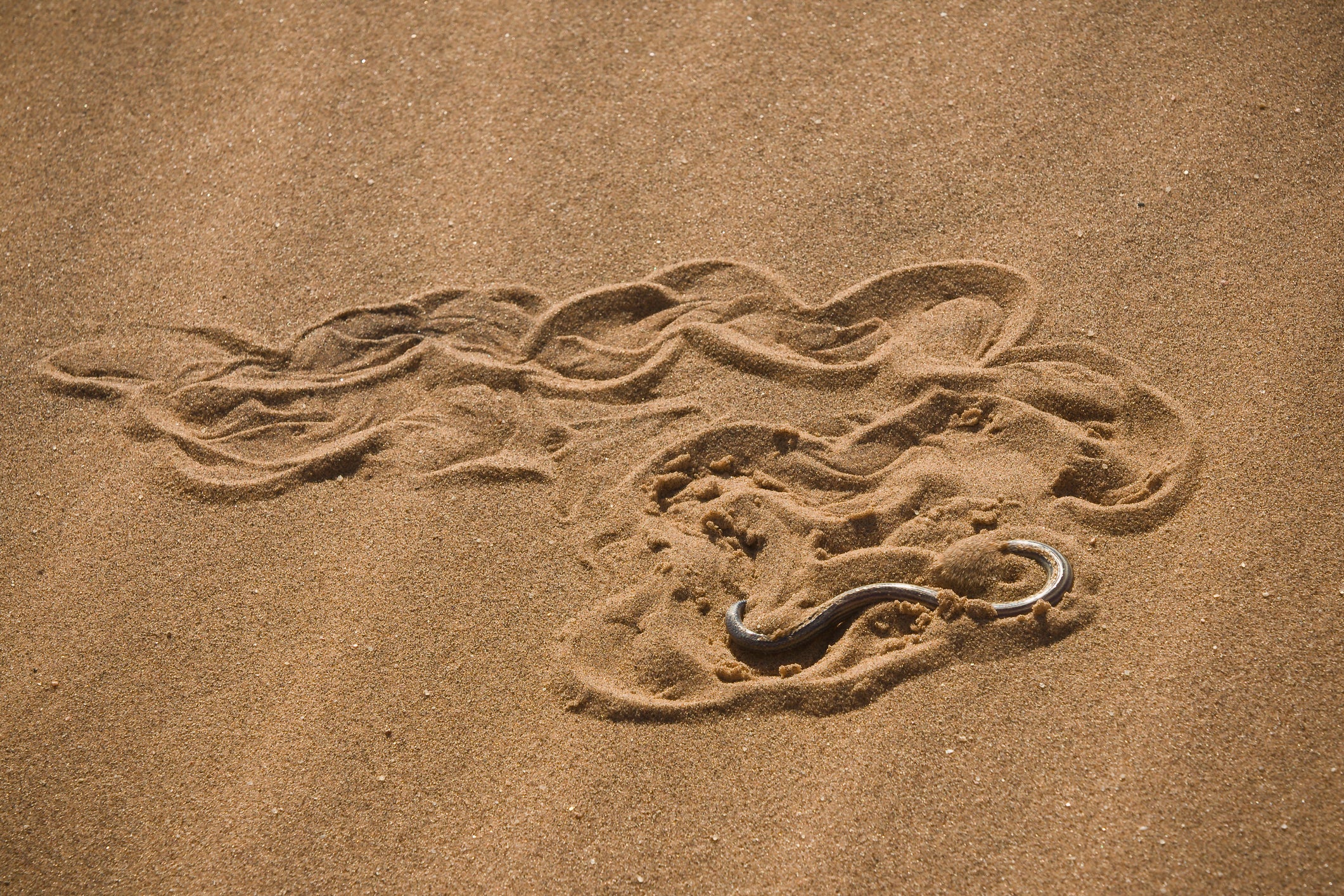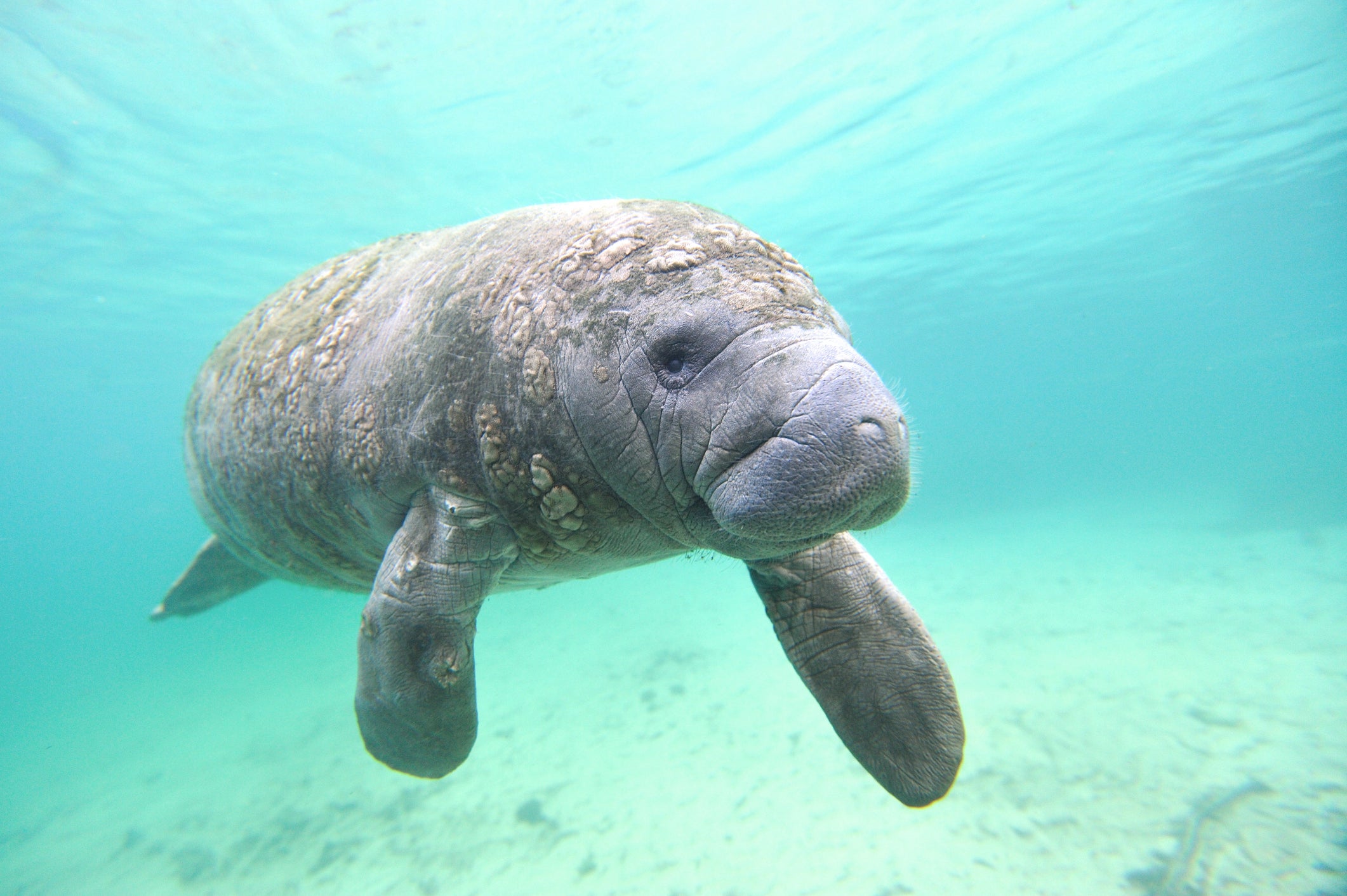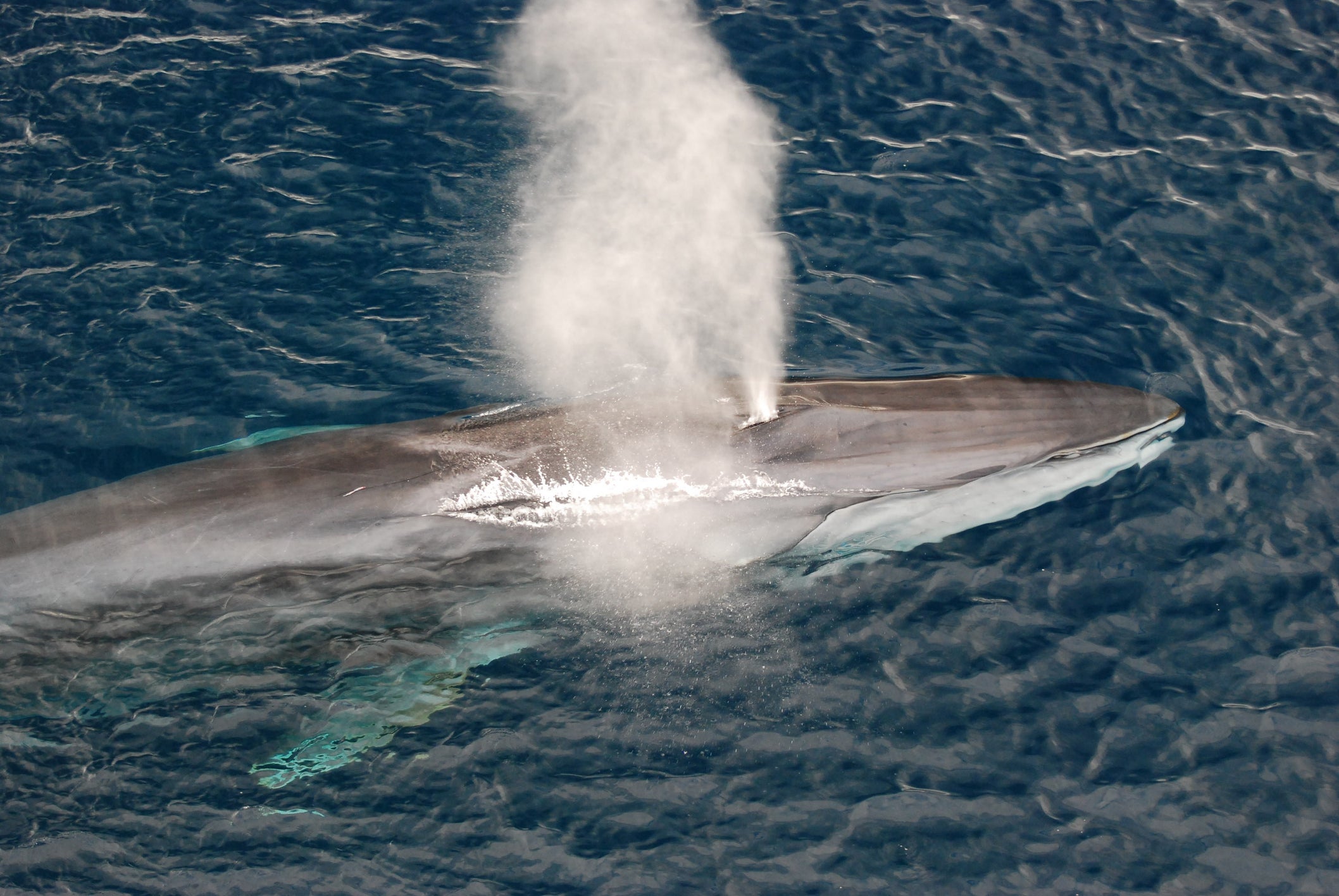Science news in brief: From octopus arms to whale songs with secrets
And other stories from around the world

Octopuses have a secret sense to keep their eight arms out of trouble
Though it is well-known for its many arms, the octopus does not seem to know where those eight appendages are most of the time.
“In the octopus, you have no bones and no joints, and every point in its arm can go to every direction that you can think about,” says Nir Nesher, a senior lecturer in marine sciences at the Ruppin Academic Center in Israel.
So how does the octopus keep all those wiggly, sucker-covered limbs out of trouble? According to a study published last month in The Journal of Experimental Biology by Nesher and his colleagues, the octopus’ arms can sense and respond to light – even when the octopus cannot see it with the eyes on its head. This light-sensing ability may help the cephalopods keep their arms concealed from other animals that could mistake the tip of an arm for a marine worm or some other kind of meal.
Itamar Katz, one of the study’s authors, first noticed the light-detecting powers while studying a different phenomenon: how light causes the octopus’s skin to change colour. With Nesher and Tal Shomrat, another author, Katz saw that shining light on an arm caused the octopus to withdraw it, even when the creature was sleeping.
Further experiments showed that the arms would avoid the light in situations when the octopus could not see it with its eyes. Even when the octopuses reached an arm out of a small opening on an opaque, covered aquarium for food, the arm would quickly retract when light was shined on it 84 per cent of the time.
This was a surprise, as if the octopus “can see the light through the arm; it can feel the light through the arm”, Nesher says. “They don’t need the eye for that.”
The arm light-response behaviour also adapted to changing conditions. When the octopuses were kept in the dark for a week or a month, the reflex of withdrawing from light became faster but also required brighter light to activate it.
However, it is still a mystery how an octopus’s arms can detect light, let alone respond to it.
Surgical experiments did provide some clues. The arm stopped retracting from the light when it was separated from the body or when the octopus was anaesthetised. Though the behavioural response did not require sight, it still required the brain to be intact.
Richard Sima

The skin-deep physics of sidewinder snakes
When it comes to slithering, most snakes do it the same way: straight ahead. But for snakes that live in deserts, getting around can be a challenge.
“As we know from trying to move on sand in a beach or other places, it can be difficult to move on these materials that yield underneath you as you move forward,” says Jennifer Rieser, a professor of physics at Emory University in Atlanta.
That’s why sidewinders slither sideways. Although some snakes can move laterally under certain conditions, Rieser says, sidewinders – the common name for a group of three distantly-related vipers found in the deserts of Africa, the Middle East and North America – have raised this unique form of movement to an art. The sidewinding rattlesnake, for example, can travel at speeds of 18mph, making it the fastest snake in the world.
Now a new study by Rieser and her colleagues may have found their secret: scales packed with tiny pits, instead of the minuscule spikes found on the bottom of other snakes. Their research was published in Proceedings of the National Academy of Sciences.
The microstructure of snake bellies is important to how they move, Rieser says, because that’s how limbless animals interact with the ground. To examine the microstructure of sidewinder scales, her team used an atomic force microscope to scan naturally shed snake skins. They then built mathematical models to test how the structures they saw would perform under different kinds of friction.
Although they appear smooth to the naked eye, the belly scales of most snakes have microscopic spikes that are oriented from head to tail. These create a friction between the snake’s body and the ground, Rieser says, which helps them move forward in a familiar headfirst slither.
Snakes from a wide variety of habitats and ecological roles have these prominent spikes on their bellies.
But sidewinding species have either reduced or phased out those spikes, trading them in for belly scales that are pocked with microscopic pits that can move in any particular direction.
Sidewinding instead depends on lifting large chunks of the body into the air as the animal moves. Scales that create strong directional friction, Rieser says, do very badly with this kind of movement. But if scale friction is uniform in all directions, it makes sidewinding significantly easier.
Asher Elbein

Manatees may carry half a million microscopic hitchhikers
Nematodes are roundworms that are mostly microscopic (although some are upsettingly large) that have adapted to a spectacular range of homes, from Antarctic soil to the inside of your gut.
A study published in Scientific Reports presents the native Florida manatee and its skin as the latest evidence of this wormy universe.
The study reports that three nematode species – two previously unknown – were found in skin samples from Florida manatees. The authors estimate that the skin of an average adult manatee could potentially carry over half a million nematodes.
Manatee skin is a perfectly reasonable home for nematodes. The skin of the marine mammals, when not violently defaced, can host many creatures.
Nevertheless, it is surprising to find these particular nematodes hitchhiking on manatees, says Rafael Gonzalez, the study’s lead author. Known as diplogastrids, this family is rarely detected in vertebrates or marine ecosystems; they often develop parasitic or symbiotic relationships with insects.
“For us, that was sort of strange to be finding these things that we’re used to finding in little tiny bugs on the back of a sea elephant, basically,” says Gonzalez, who completed the research while working as a nematode biologist at the University of Florida’s Fort Lauderdale Research and Education Centre.
Previous studies had associated nematodes with manatee skin. One in 2011 described an “extraordinarily” long-tailed diplogastrid nematode, Cutidiplogaster manati, found in skin lesions on west Indian manatees in an aquarium in Okinawa, Japan. That piqued the interest of these authors. In 2013, they began collecting samples from Florida manatees in the Crystal River National Wildlife Refuge.
The team found what was probably C manati – and two other nematodes.
Gonzalez, working alongside researchers conducting an annual health assessment of manatees, collected dead skin from the tails of seven of the mammals in 2018 and another seven in 2019. The collection process is comparable to a human back scratch, and the animals are swiftly returned to the water, Gonzalez says, to minimise stress.
The samples were examined under a microscope, then their DNA was extracted. The new nematodes had large teeth – maybe for eating other nematodes, or for “something tricky”, such as splitting open diatom algae and consuming their insides, says Robin Giblin-Davis, a recently retired nematologist at the University of Florida and a co-author of the study.
All three manatee nematodes were found on all of the manatees sampled in 2018 and 2019, but no skin lesions were found; the authors concluded that it was unlikely that the nematodes were hurting their hosts.
Ellie Shechet

Whale songs could reveal deep secrets beneath the oceans
In 2019, Václav Kuna, a seismologist, was perusing recordings from dozens of seismometers at the bottom of the northeast Pacific Ocean, when he kept finding strange noises: one-second chirps, repeating every 30 seconds or so.
This staccato symphony turned out to be the songs of fin whales.
“Because I’m a seismologist, I wasn’t just like, oh, fin whales, that’s cute,” says Kuna, then a doctoral student at Oregon State University.
He dove deeper into the data and found that these booming cetacean calls were impacting the seafloor. As they did, some of their energy transmitted through the ground as seismic waves, which bounced around the buried rocky expanse before being picked up by those ocean-bottom seismometers.
What Kuna, now at the Institute of Geophysics of the Czech Academy of Sciences, and John Nabelek of Oregon State would soon discover is that fin whale song can be used to peer into the oceanic crust. Using this biological source of seismicity, researchers found they could see 8,200ft below the seafloor, through sediments and the underlying volcanic rock. There would be less need to wait for a tectonic source of seismic waves, or sending a fully crewed, air gun-armed ship into the middle of the ocean to create artificial seismicity and visualize the layer-cake nature of the planet’s underworlds.
“It’s a nice example of how we make use of the data the planet provides for us,” says Jackie Caplan-Auerbach, a seismologist and volcanologist at Western Washington University not involved with the work, which was published in Science.
Fin whales – 60tn, 80ft long, graceful beasts – get their name from the prominent fin on their backs. They are fast swimmers that love to eat krill, schools of tiny fish and squid. And as they swim in groups, they gossip with one another by making booming 189decibel chirps.
For this study, the researchers had to determine the location of the fin whales, a bit like searching for the epicentre of an earthquake. They looked at the arrival times of both the whale chirps’ sound waves heading directly to the seismometer and the sound waves ricocheting between the sea surface and the seafloor. The time difference revealed the whale’s distance. Making some reasonable assumptions about the fin whale’s typical swimming depth, they could trace their journeys through the ocean.
Robin George Andrews
© The New York Times
Join our commenting forum
Join thought-provoking conversations, follow other Independent readers and see their replies
Comments



Bookmark popover
Removed from bookmarks